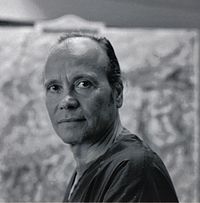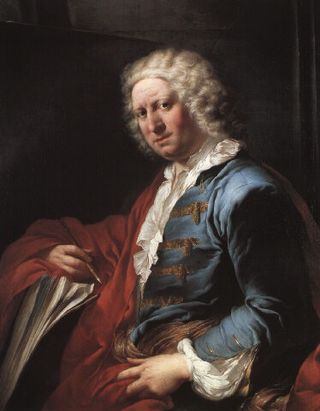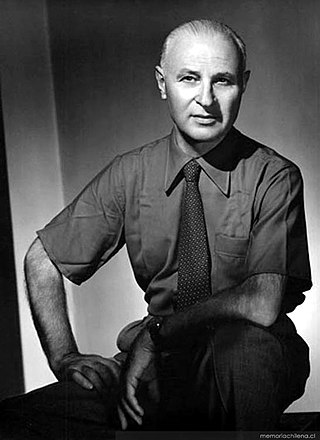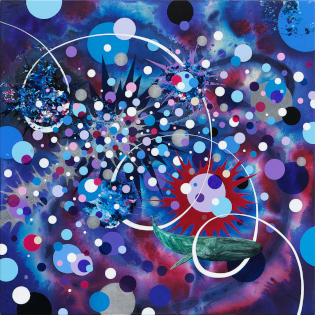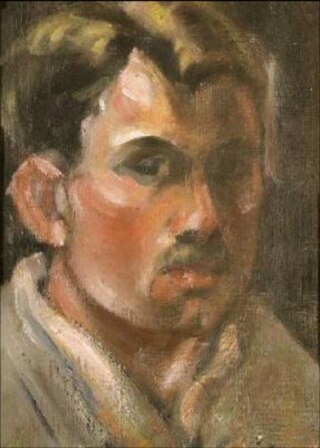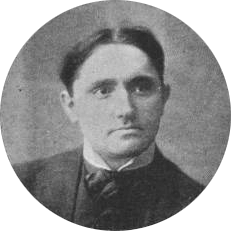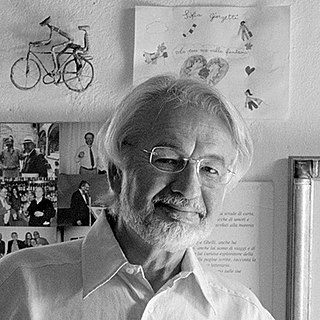Paintings
"Sassone is a Florentine by birth, ancestry and temperament. But his training and experience have combined to give him a view of the world that is truly international - spiritually as well as geographically. He has remained faithful to his innate genius and deeply-held convictions as an artist." (Charles Speroni, Dean, College of Fine Arts, UCLA)
Marco Sassone was born in Campi Bisenzio, a Tuscan village, in 1942. His family moved to Florence in 1954, and there he met painters Ottone Rosai and Ugo Maturo, who encouraged him to follow his interest in art. He enrolled at the Istituto Galileo Galilei, where he studied architectural drafting for several years. During this period he supported himself by selling watercolour sketches of Florence to tourists, many of whom were Americans, which increased his fluency in English.
Later, he studied with painter Silvio Loffredo, professor of art at the Accademia in Florence, a pupil himself of the Austrian master Oskar Kokoschka. Loffredo encouraged him to develop his own style and vision. For inspiration, Sassone studied the works of the 19th-century Italian impressionists, the Macchiaioli - Giovanni Fattori, Vito D’Ancona and Silvestro Lega. He began exhibiting his first works at this time. At the age of 25, he was selected to exhibit at Lo Sprone Cultural Center in Florence.
In November 1967, soon after the painful experience of the Florentine flood, Sassone traveled to the United States and settled in California. He later moved to Laguna Beach, a small seaside community, Mediterranean in geography and climate, with its own commitment to the arts. He became a regular exhibitor at the annual Festival of the Arts.
Throughout the seventies, he participated in a variety of exhibitions in the U.S. and abroad. Of his work then, the art critic for the Los Angeles Times, William Wilson, wrote: "Sassone is impressively gifted as a colorist and skilled in rendering reflections and color in light." (Wilson was reviewing a one-person show of his work at the Haggenmaker Galleries in Los Angeles, 11/14/75.)
In 1982 Marco Sassone was knighted by president of Italy, Sandro Pertini, into the "Order to the Merit of the Italian Republic" and received a gold medal award from the Italian Academy of Arts, Literature and Science.
In the early 1980s Sassone moved his studio to San Francisco. In March 1988, the Los Angeles Municipal Art Gallery hosted the American Preview for his one-person exhibition to be held at the Bernheim-Jeune Gallery in Paris that April.
Art historian Donelson Hoopes published Sassone, a monograph, in concurrence with the artist's exhibition at the Laguna Art Museum (November - December 1979). With prescience, Hoopes had observed: "Sassone’s art has evolved from within, and such an organic, psychological and spiritual process may take his work along new and unforeseen paths." By the late eighties, Sassone had become increasingly concerned with social themes. He started working with the InterAid organization, donating paintings to raise money for the group's work with children in crisis. He also donated works to a non-profit group called Another Planet, based in Los Angeles, supporting that group's work with the homeless.
He began extensive - and personal - research on the homeless and painted a series of large canvasses and charcoal drawings portraying the life he observed on the streets. A number of these works have been exhibited at the Chicago International Art Exposition, the Basel Art Fair in Switzerland and the Jan Baum Gallery in Los Angeles, as well as in the exhibition Body Politic at the San Francisco Arts Commission Gallery and Issue of Choice at the Los Angeles Contemporary Exhibition (LACE).
In March 1994, his exhibition Home on the Streets opened at the Museo ItaloAmericano in San Francisco later traveling to Los Angeles and Florence, Italy. Kenneth Baker, art critic for the San Francisco Chronicle wrote about his work: "There is true technical brilliance here…In the drawings, his technique seems to discover fresh descriptive possibilities each time out." Home on the Streets traveled to Los Angeles in 1996 and Florence, Italy in 1997, where the exhibition was mounted in the Cloisters of the Santa Croce Church. Paola Bortolotti, art critic for La Nazione, writes: "The persistent theme does not carry a denunciation of a social problem, but it is rather the pretext to pour forth onto canvas the urgency of the brush strokes."
In 1997 Marco Sassone received a commission to create a 200 square foot mural in downtown San Francisco. The finished work is composed of five canvasses dedicated to the theme of Il Palio, and is presently in the collection of Santa Clara University, Santa Clara, California.
In May, 2001, the Museo ItaloAmericano in San Francisco inaugurated the exhibition, Master and Pupil, works by Oskar Kokoschka, Silvio Loffredo, and Sassone. Author Peter Selz, writing in the catalog about the artist's work, described the link between the three artists: "A canvas like Chinese Reds (1990) in scarlet color relates to the chromatic scheme of his teacher’s Angel of Death (1998), while alarming paintings like Marlboro Country (1990) with its human skulls spread in the foreground, or Coit Tower Night (1988) – a painting of deep blue water, a brown hill and a violent purple sky – all done with an agitated brush, elicit a fervent emotion, comparable to the sensations evoked by the canvases of Kokoschka himself."
The Palazzo Ducale Museum in Massa-Carrara, Italy presented his retrospective exhibition in March–April, 2002 with the publication of a catalog written by Massimo Bertozzi. The exhibition was reviewed by La Nazione, Florence and La Repubblica, Rome. Ilaria Bonuccelli writes for La Repubblica, "The man with blue eyes stares out at you. No concessions made. He offers you – perhaps forces upon you – a magnified view of trashed humanity. The kind that rummages around along the sidewalks of San Francisco. His pupils gape at an interior world which he invites you to enter, without knocking. The brush-strokes are merciless. As a man and as a painter, Sassone, sucked up onto the world of the homeless from the time he was a child, at Campi Bisenzio.
The exhibition Master and Pupil held in San Francisco in 2001 was installed in the Cloister of Sant’ Agostino in Pietrasanta, Italy in 2003. The museum published a catalog with an essay by the art writer Domenico Pugliese. Milly Mostardini wrote in a review for Il Tirreno: "From Kokoschka to Loffredo and Sassone: The lessons are passed on from master and pupil. Sassone’s expressionism leads to visionary transformations, in an intense dance of chromatic impastos, with furious, explosive strokes of pigment."
In 2005 Marco Sassone relocated his studio to Toronto, Ontario, Canada.
In 2008 his exhibition entitled Marco Sassone: Toronto, opened on April 3 at the Odon Wagner Contemporary. Jonathan Goodman, art critic for Art in America, wrote in the exhibition catalog, "Sassone’s audience approaches his work knowing that the paintings are in dialogue with a tradition going back to the early twentieth century. His expressionism escapes the epithet of anachronistic, however, by being so sharply lived. While his works are not overly emotional, they gain success because they relate to a complete life of the imagination in which feelings and intellect combine. " Deirdre Kelly wrote in the Globe and Mail: "With gestural brush strokes and an expressionistic use of color, Mr. Sassone romanticizes such banal views as a Carlaw parking lot and the westbound Gardiner Expressway."
He received a commission to create a mural for the lobby of the Bellagio, a glass tower in downtown Toronto. The artist prepared drawings and a final study in pastel, in scale for the space. The completed work, composed of three panels and titled Waterfront, was installed in late October.
In the following year Sassone participated at the International Art Fair, Palm Beach 3 in Florida and in the Group exhibition Summerset at David Findlay Jr. Fine Art, New York. The artist lectured at Seaton House, the largest homeless shelter in Toronto.
In 2010, he returned to San Francisco to attend the October 1st inauguration of his one-man show installed in the splendid space of the Shrine of Saint Francis of Assisi. He traveled to Rome for his premiere exhibition Santuario at the Palazzo dell’ Informazione. The exhibition was composed of thirty works featured urban landscapes from his Toronto series. The Adnkronos news agency produced a video-interview titled Marco Sassone - Quando l'anima resta inchiodata alla tela. (Marco Sassone – When the Soul is Nailed to the Canvas).
In 2012 the exhibition Marco Sassone: Watercolours opened at Berenson Fine Art, Toronto. Peter Clothier wrote in the Huffington Post: "These dark paintings are, after all, not primarily about the darkness that pervades them, but about the light that manages to shine through." In October he traveled to Bartlesville, Oklahoma to attend the opening of his exhibition Architecture and Nature installed at the Price Tower Art Center, a museum designed by Frank Lloyd Wright.
In 2014 his exhibition Oil and Water was inaugurated at the San Angelo Museum of Fine Art in Texas.
In 2016 the Bata Museum in Toronto, Canada opened the exhibition Marco Sassone: His Boots and Other Works accompanied by a catalogue written by Deirdre Kelly. CBC National Television, Canada broadcast a feature profile of the artist with an interview at the museum and at his studio in Toronto.
In 2017, Berenson Fine Art mounted the exhibition Marco Sassone: Viaticus, a body of work representing "a microcosm of collective memory, giving expression to historical allusions, as a literal and philosophical journey along tracks and converging furrows that visually draw the eye on a voyage." The exhibition was part of a feature article that appeared in the Toronto Star on November 1, 2017.
